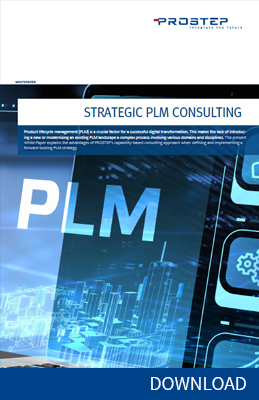Over 70 participants from industry, development and the research community attended the User Day held at the Center for Applied Aviation Research (ZAL) in Hamburg, where PROSTEP, together with other consortium partners, presented the results of the joint SAMPL (Secure Additive Manufacturing Platform) project sponsored by the German Federal Ministry for Economic Affairs and Energy (BMWi). The solution for the tamper-proof exchange of 3D print data based on blockchain technology and developed within the framework of the project is now suitable for practical use, as reports from the field provided by users and service providers in the area of 3D print technology made clear. In addition to industrial use cases, Marco Mueller-ter Jung, LL.M., specialist lawyer for IT law at DWF, also discussed legal aspects of 3D data exchange, such as IP protection and protection of company data, at the User Day.
"Blockchain is gaining increasing acceptance in industry because industry has recognized the need for the tamper-proof transfer of 3D print data," said PROSTEP project coordinator Dr. Martin Holland commenting on the success of the event.
At the start of the event, Holland explained the background of the project and the advantages provided by a trustworthy data transfer chain (chain of trust) for 3D print data, such as protection against counterfeit parts due to the misuse of data or the unique identification of printed components. It is imperative for companies that want to have spare parts for their aircraft additively manufactured by external service providers for example. The foundation for the chain of trust is provided by PROSTEP's secure data exchange solution OpenDXM GlobalX in combination with blockchain technology, which manages the licenses for 3D printing and protects against manipulation.
The integration of trusted 3D printers in the security solution is also crucial to creating a seamless chain of trust. Several companies, including 3DMicroPrint and SLM Solutions, presented SAMPL-capable 3D printers at the User Day. Weidmüller, a manufacturer of control cabinet systems, was the first industrial user to manufacture a component on a metal-based 3D printer from SLM Solutions using the SAMPL chain of trust. "Connecting our 3D printers to SAMPL was easy," said Andreas Hoppe, head of the software development team at SLM Solutions. "The well-documented REST interface meant that we were able to support the processing of blockchain-protected print jobs within just a few days."
Practical demonstrations in the foyer of the ZAL neatly rounded off the interesting program of presentations: the Airbus AM laboratory demonstrated the use of a SAMPL-capable FDM (fused deposition modeling) printer. The company NXP showed how components can be identified with absolute certainty in the context of 3D printing by automatically fitting them with RFID chips. And PROSTEP used the SAMPL demonstrator to illustrate how OpenDXM GlobalX can be used to transfer data to a SAMPL-capable FDM printer.
At the end of the event, Holland explained how the SAMPL chain of trust can be put into use in a broad range of industrial applications within the framework of a consortium solution. Anyone interested in this consortium solution can obtain further information from Dr. Martin Holland (martin.holland@prostep.com).
The presentations of the event will soon be available at http://www.sampl-3d.de.
